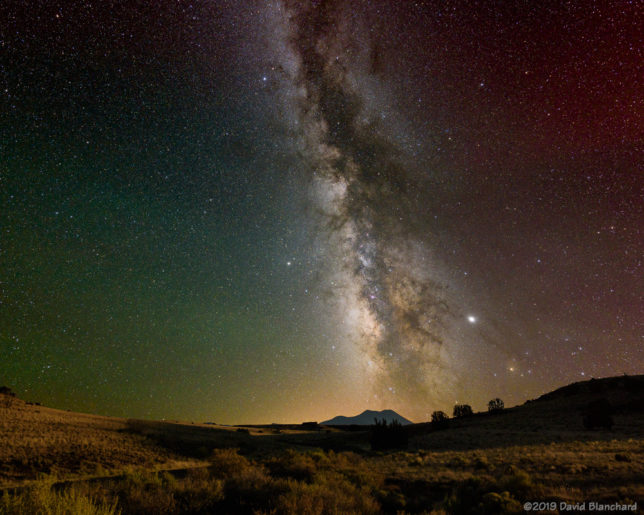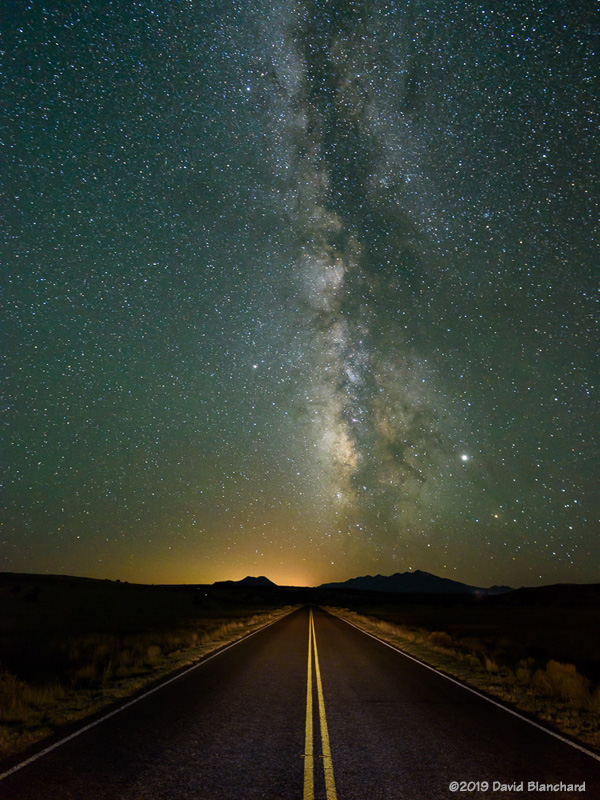A few nights ago I had an opportunity to photograph the Milky Way under exceptionally clear skies. I wanted to do two things: One was to replicate an image I shot a few years ago and the other was to get a Milky Way/landscape composite with a moonlit foreground.
I headed out to Wupatki National Monument (an International Dark Sky Park) and set up in a dark parking lot with a moonlit landscape. The Moon was still well above the horizon and I took several long exposure images to get a good foreground. After the Moon had set, I shot the Milky Way (using a star tracker to eliminate star trails). Back at home, I would then merge the two images. The result is the image below showing the Milky Way aligned above the distant San Franciso Peaks with mesas rising on either side of the shallow valley. What also shows up is the large amount of light pollution in Flagstaff. Flagstaff is the worlds First International Dark Sky City but it takes a lot of work to keep the skies dark. I fear we may be losing the battle.

After completing this set of images, I moved to my next location to take my final shot. This is a single, 30-second image at high ISO (ISO 3200) with the tripod carefully centered on the stripe down the middle of the road. Comparing this shot with the one taken a few years ago indicates that the older image was blessed (if that’s the right word) with airglow in the lower part of the image giving it a much more interesting character. The newer image lacks this airglow but does have a more interesting horizon.

And now the North American Monsoon has begun to ramp up across the southwest and clear skies will be a rarity for the next few months. Time to start photographing storms and lightning!